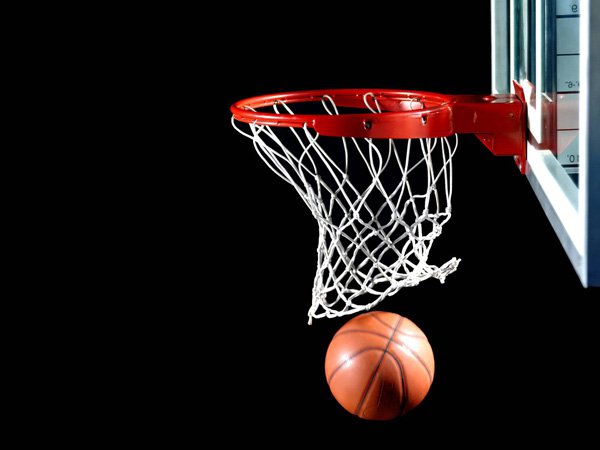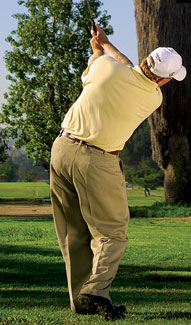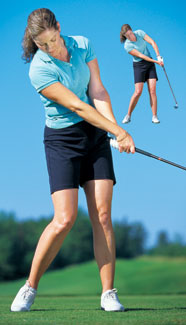offensive holding / use of hands rule question
Question
Hi,
I am a college writing instructor and football fan. This semester, I'm excited to have a chance to teach a researched writing course with a "football controversies" special topics theme. I look forward to learning a lot from my students--many of whom are players.
This issue arose in class recently, but I'm having trouble tracking down solid info from NCAA or NFL resources. Could you tell me about a recent rule change (maybe within the last 5 years?) limiting how offensive linemen can use their hands to block? And is that a college rule, an NFL rule, or both? I can find the progression in rules requiring offensive linemen not to use their hands/arms and the shift in the 70s/80s into letting them use their hands. And I have friends who swear that relatively recently their have been changes to the rules--but I sure can't find the info. I would appreciate any information!
Thank you,
Kerri
Answer
Kerri
There have been no rule changes within the last 10+ years concerning Holding at the NCAA level. My expertise is with regard to the NCAA and National Federation Rules and not the NFL. I am sorry but I can not address with expertise the rules of the NFL. You are correct that the progression in rules requiring offensive linemen not to use their hands/arms did shift in the 70s/80s into letting them use their hands due to size, speed and the passing game and the development of new pass blocking techniques and schemes.
Holding has been continually addressed in NCAA Memos and recently addressed in the Football Code of Ethics. Holding
and Illegal use of the hand or arm is unfair play, eliminates skill and does not belong in the game. The object of the game is to advance the ball by strategy, skill and speed without illegally holding your opponent. All coaches and players should thoroughly understand the rules for proper offensive and defensive use of the hands. Holding is a frequently called penalty; it is important to emphasize the severity of the penalty. (Cite from the NCAA 2007 Football Code, Holding Caption).
The following is the NCAA Rule regarding Holding and illegal use of hands:
2007 NCAA Football Rules Rule 9 SECTION 3. ARTICLE 3.
Use of Hands or Arms by Offense
ARTICLE 3.
a. A teammate of a runner or a passer legally may block with his shoulders, his hands, the outer surface of his arms or any other part of his body under the following provisions.
1. The hand(s) shall be:
(a) In advance of the elbow.
(b) Inside the frame of the opponent抯 body (Exception: When the opponent turns his back to the blocker) (A.R. 9-3-3-VI and VII).
(c) At or below the shoulder(s) of the blocker and the opponent (Exception: When the opponent squats, ducks or submarines).
(d) Apart and never in a locked position.
2. The hand(s) shall be open with the palm(s) facing the frame of the opponent or closed or cupped with the palms not facing the opponent (A.R. 9-3-3-I-IV and VI-VIII).
PENALTY?0 yards from the basic spot (Exception: Offensive team illegal use of hands fouls behind the neutral zone are
enforced from the previous spot. Safety if the foul occurs
behind Team A抯 goal line).
b. Holding or illegal obstruction by a teammate of the runner or passer applies to Rule 9-3-3-a:
1. The hand(s) and arm(s) shall not be used to grasp, pull or encircle in any way that illegally impedes or illegally obstructs an opponent.
2. The hand(s) or arm(s) shall not be used to hook, clamp or otherwise illegally impede or illegally obstruct an opponent (A.R. 9-3-3-I).
PENALTY?0 yards from the basic spot (Exception: Offensive team holding fouls behind the neutral zone are enforced from the previous spot. Safety if the foul occurs behind Team A抯 goal line)
The Approved Football interpretation of the rules are as follows: SECTION 3. Blocking, Use of Hand and Arm
Use of Hands or Arms by Offense桝RTICLE 3
Approved Ruling 9-3-3
I. While a legal forward pass is in flight, a Team A player behind his scrimmage line holds an opponent. RULING: If the pass is completed, incomplete or intercepted, the penalty is 10 yards from the previous spot. Safety if the foul occurs behind Team A抯 goal line.
II. A teammate of the passer or runner, while charging across the neutral zone, contacts an opponent with his hands and arms not parallel to the ground or his hands cupped or closed but with the palms not facing the opponent. RULING: Legal use of hands.
III. A teammate of the passer or runner, behind the neutral zone, has his arms parallel to the ground and contacts an opponent above the shoulders. RULING: Illegal use of hands. Penalty?0 yards or 15 yards for personal foul, previous-spot enforcement. Safety if the foul occurs behind Team A抯 goal line.
IV. A teammate of the passer or runner delivers a blow with the hand(s)closed to an opponent below the shoulders. RULING: Personal foul. Penalty?5 yards, basic-spot enforcement, or previous-spot enforcement if foul occurs behind the neutral zone. Safety if the foul occurs behind Team A抯 goal line.
V. A2抯 hands contact defensive player B2 in a legal block. B2 spins to avoid blocker A2, whose hands then contact B2抯 back. RULING: Legal block.
VI. A2抯 hands contact defensive player B2抯 back when B2 spins to avoid A2. A2 keeps his hands on B2抯 back while B2 advances toward the passer. RULING: Legal block.
VII. A2抯 hands contact defensive player B2 when B2 spins to avoid blocker A2, whose hands then contact B2抯 back. After A2抯 hands lose contact with B2, A2 advances and pushes B2 in the back. RULING: Illegal block in the back. Penalty?0 yards, basic-spot enforcement, or previous-spot enforcement if foul occurs behind the neutral zone (Rule 2-3-4). Safety if the foul occurs behind Team A抯goal line.
VIII. A1 in, beyond or behind the neutral zone contacts an opponent with an open hand or with hands closed or cupped and palms not facing the opponent. RULING: Legal block.
Use of Hands or Arms by Defense桝RTICLE 4
Approved Ruling 9-3-4
I. During a legal forward pass that crosses the neutral zone, B1 holds eligible A1, who is beyond or behind the neutral zone. The pass is not catchable by A1. RULING: Team B foul, holding. Penalty?0 yards and first down, basic-spot enforcement.
II. Before a legal forward pass, which crosses the neutral zone, is thrown, Team B holds eligible A1, who is beyond the neutral zone. RULING: Team B foul, holding. Penalty?0 yards and first down, basic-spot enforcement.
III. B20 intercepts A10抯 legal forward pass on his 10-yard line. During the runback, B40 pushes A80 in the back above the waist at Team B抯 24-yard line. B20抯 run ends at the 50-yard line. RULING: Team B foul, illegal block in the back. Penalty?0 yards from the spot of the foul. Team B抯 ball, first and 10 from its 14-yard line.
IV. B50, in an attempt to reach the kicker, pulls lineman A60 by the shoulders and (a) releases A60 as he goes by or (b) continues to hold A60. RULING: (a) Legal. (b) Holding. Penalty?0 yards, previousspot enforcement.
There is a section of the Rules that is known as the Code of Ethics that govern football. This has recently (within the last seven years) addressed holding.
The Football Code
Football is an aggressive, rugged contact sport. Only the highest standards of sportsmanship and conduct are expected of players, coaches and others associated with the game. There is no place for unfair tactics, unsportsmanlike conduct or maneuvers deliberately designed to inflict injury.
The American Football Coaches Association (AFCA) Code of Ethics states:
a. The Football Code shall be an integral part of this code of ethics and should be carefully read and observed.
b. To gain an advantage by circumvention or disregard for the rules brands a coach or player as unfit to be associated with football. Through the years, the rules committee has endeavored by rule and appropriate penalty to prohibit all forms of unnecessary roughness, unfair
tactics and unsportsmanlike conduct. But rules alone cannot accomplish this end. Only the continued best efforts of coaches, players, officials and all
friends of the game can preserve the high ethical standards that the public has a right to expect in America抯 foremost collegiate sport. Therefore, as a
guide to players, coaches, officials and others responsible for the welfare of the game, the committee publishes the following code:
Coaching Ethics
Deliberately teaching players to violate the rules is indefensible. The coaching of intentional holding, beating the ball, illegal shifting, feigning injury, interference, illegal forward passing or intentional roughing will
break down rather than aid in the building of the character of players. Such instruction is not only unfair to one抯 opponent but is demoralizing to the players entrusted to a coach抯 care and has no place in a game that is an integral part of an educational program.
The following are unethical practices:
a. Changing numbers during the game to deceive the opponent.
b. Using the football helmet as a weapon. The helmet is for the protection of the player.
c. Using a self-propelled mechanical apparatus in the teaching of blocking and tackling.
d. Spearing. Players, coaches and officials should emphasize the elimination of spearing.
e. Using nontherapeutic drugs in the game of football. This is not in keeping with the aims and purposes of amateur athletics and is prohibited.
f. 揃eating the ball拻 by an unfair use of a starting signal. This is nothing less than deliberately stealing an advantage from the opponent. An honest starting signal is needed, but a signal that has for its purpose
starting the team a fraction of a second before the ball is put in play, in the hope that it will not be detected by the officials, is illegal. It is the same as if a sprinter in a 100-meter dash had a secret arrangement with the starter to give him a tenth-of-a-second warning before firing the pistol.
g. Shifting in a way that simulates the start of a play or employing any other unfair tactic for the purpose of drawing one抯 opponent offside. This can be construed only as a deliberate attempt to gain an unmerited advantage.
h. Feigning an injury for the purpose of gaining additional, undeserved time for one抯 team. An injured player must be given full protection under the rules, but feigning injury is dishonest, unsportsmanlike and contrary to the spirit of the rules. Such tactics cannot be tolerated among sportsmen of integrity.
Talking to an Opponent
Talking to an opponent in any manner that is demeaning, vulgar, abusive or 搕rashy拻 or intended to incite a physical response or verbally put an opponent down is illegal. Coaches are urged to discuss this conduct frequently and support all officials?actions to control it.
Talking to Officials
When an official imposes a penalty or makes a decision, he simply is doing his duty as he sees it. He is on the field to uphold the integrity of the game of football, and his decisions are final and conclusive and should be accepted by players and coaches.
The AFCA Code of Ethics states:
a. On- and off-the-record criticism of officials to players or to the public shall be considered unethical.
b. For a coach to address, or permit anyone on his bench to address, uncomplimentary remarks to any official during the progress of a game, or to indulge in conduct that might incite players or spectators against the officials, is a violation of the rules of the game and must likewise be considered conduct unworthy of a member of the coaching profession.
Holding
Illegal use of the hand or arm is unfair play, eliminates skill and does not belong in the game. The object of the game is to advance the ball by strategy, skill and speed without illegally holding your opponent. All coaches and players should thoroughly understand the rules for proper
offensive and defensive use of the hands. Holding is a frequently called penalty; it is important to emphasize the severity of the penalty.
I hope this helps. Should you require further assistance please feel free to contact me.
Best wishes,
Victor Winnek
NCAA Football Official
Can I make it?
Afraid to get back in the game


